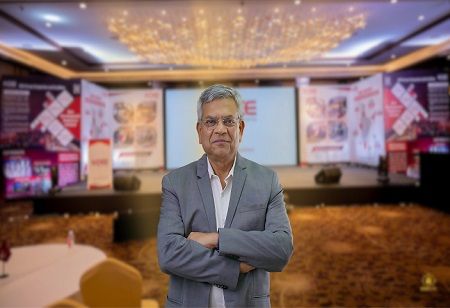
K.L. Bansal, Chairman & Managing Director of DEE Development Engineers in an interaction with Janifha Evangeline, Editor of Asia Manufacturing Review shares his views on how new materials and innovations are redefining the design of low-carbon infrastructure in power generation and transmission, how engineering excellence can support just energy transitions in developing economies while ensuring local job creation and community resilience and more.
Krishan Lalit Bansal serves as the Chairman and Managing Director of the company, bringing a wealth of experience and leadership since its inception in 1988. He holds a bachelor's degree in mechanical engineering from Punjab Engineering College, Chandigarh, and has extensive expertise in prefabricated piping systems and the biomass power sector. Prior to establishing the company, he founded Development Engineers, a partnership concern, in 1986, which was dissolved in 1988. His entrepreneurial spirit extends to other ventures, including DEE Group Trust and DDE Piping Components.
What new materials and innovations are redefining the design of low-carbon infrastructure in power generation and transmission?
We are witnessing a paradigm shift in how power infrastructure is designed, driven by the twin goals of reducing emissions and enhancing performance. Innovations in advanced alloys such as duplex stainless steels, Incoloy, and high-purity carbon steel are enabling piping systems to withstand extreme temperatures and pressures, particularly relevant to hydrogen and supercritical power applications. For instance, at DEE Development Engineers, these materials are central to our next-generation pipe spools and induction bends, designed to perform in demanding decarbonized energy ecosystems.
Globally, we are also witnessing a growing adoption of carbon-conscious inputs, including low-carbon aluminium and green steel, enabled by renewable energy-powered smelting, as seen in Europe’s grid expansion projects. The future of energy infrastructure will be defined not just by the materials used but by how intelligently they are engineered and prefabricated to reduce waste, lower embodied carbon, and extend lifecycle durability. That’s where our strength lies, by bringing precision engineering to the frontlines of the energy transition.
How can engineering excellence support just energy transitions in developing economies while ensuring local job creation and community resilience?
Engineering has a larger responsibility beyond technology — it must serve society. In emerging economies like India, the energy transition must be equitable, and engineering plays a central role in achieving that.
For instance, our approach at DEE blends capability creation with community impact. Through our new state-of-the-art manufacturing facility in Anjar, Gujarat, we are generating employment for rural youth, supported by an in-house welding training school at our Palwal facility that upskills local talent and directly feeds into our production lines.
Internationally, research confirms that clean energy investments generate more jobs per dollar than fossil-based systems. By combining industrial expansion with inclusive hiring, skilling, and long-term career pathways, engineering can become the bridge that connects climate action with community resilience.
How can engineers embed lifecycle thinking into every stage of energy infrastructure — from design to decommissioning?
The engineering mindset is evolving; success isn’t just defined by operational efficiency but by how infrastructure performs across its entire lifecycle.
Globally, companies are aligning with circular economy frameworks, where components are designed for reuse or recyclability. Engineers must now consider not just construction but also maintenance, adaptability, and end-of-life strategies. This systems-level thinking should be embedded early, which can lead to smarter, more sustainable energy infrastructure.
How can companies attract and retain top engineering talent to lead the energy transition, especially in underrepresented regions or sectors? What lessons can be learned from other industries?
Talent is the engine of the energy transition, and our ability to attract and retain the best minds hinges on three factors: purpose, technology, and opportunity. For instance, we are creating an ecosystem where engineers are not limited to just being builders; they are problem-solvers in climate-critical domains like hydrogen infrastructure, nuclear, and power systems. Much like aerospace and automotive industries that transformed through automation and precision manufacturing, we are integrating robotics, digital traceability, and smart fabrication to inspire a new generation of technical leaders.
What are the most significant regulatory or infrastructural bottlenecks hindering engineering-driven innovation in energy?
India is undergoing a remarkable industrial and energy transition, with strong policy support driving momentum in clean technologies. Flagship initiatives like the National Green Hydrogen Mission, PLI scheme, and programs supporting biofuels and modular energy systems are actively enabling innovation and attracting investment. As these sectors evolve, they grow the frameworks around them, with increasing emphasis on streamlined approvals, interoperability standards, and sector-specific guidelines. This maturing ecosystem is laying the foundation for faster, more coordinated deployment of next-generation energy infrastructure.
On the infrastructure side, progress is equally promising. Efforts to modernize grid infrastructure, expand energy storage capabilities, and enhance integration of distributed renewable sources are helping address legacy system limitations. At the same time, national focus on skill development, digitalization, and technology-led capacity building is strengthening the overall manufacturing and engineering landscape. Together, these developments are creating a more agile, responsive, and innovation-ready energy sector, positioning India as a global hub for engineering-driven clean energy transformation.

